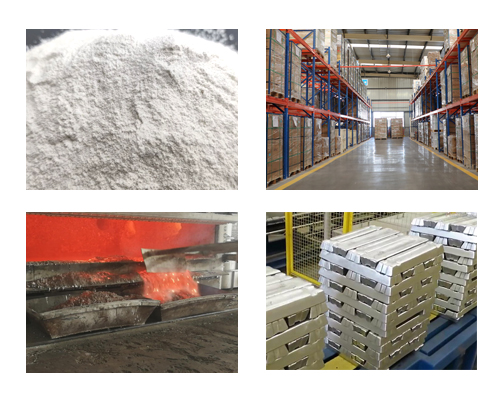Aluminum Foundry Fluxes have been widely used in aluminum and aluminum alloy casting production. Although flux products have continued to grow, the main components and formulations have basically not changed significantly.
The purpose of using aluminum casting flux can be divided into the following two: reduce the aluminum content wrapped in alumina slag; remove the slag in the aluminum liquid and improve the cleanliness of the aluminum liquid.
As product quality requirements become higher and higher, the types of melting furnaces and holding furnaces have also changed and become more suitable for specific alloys. Similarly, solvents are increasingly targeted to specific alloys and furnace types. In addition to the flux that reduces the aluminum content in the slag (usually called the “slag breaker”), there is also a need to prevent the moisture in the atmosphere from reacting with the molten aluminum to absorb hydrogen. In addition, in some alloys, it is necessary to prevent magnesium from burning out, and in alloys modified by sodium or strontium, it is necessary to avoid reducing the effect of deterioration.

For the above reasons, we have developed the following types of Aluminum Foundry Fluxes: refining agent, deslagging flux, degassing agent, covering agent, furnace wall cleaner, modifier, sodium-free flux, and granular flux. These fluxes can be suitable for stationary crucible furnaces, reverberatory furnaces, gas furnaces, electric furnaces, and oil furnaces.
With the continuous growth of the demand and price of aluminum alloy, the amount of flux will increase accordingly. However, the amount of flux added per unit alloy has been controlled, which is significantly lower than the previously recommended level. One of the reasons is environmental protection considerations. Studies have found that fluoride has the greatest impact on the environment. If fluoride is completely removed from the formulation, the efficacy of the flux is very low. At the same time, it was found that not all the flux sprinkled on the surface of the melt can function.

